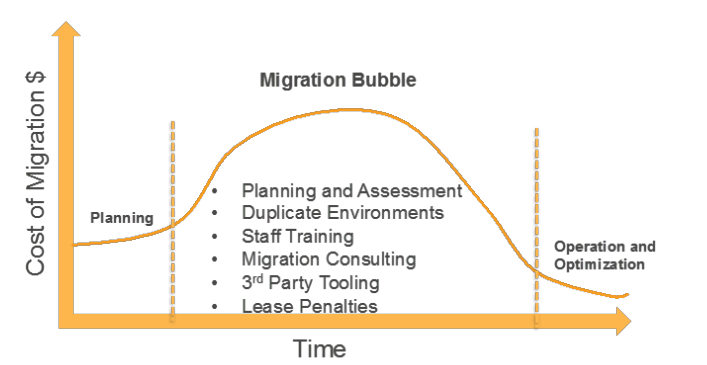Maximizing Value with AWS Whitepaper (2017)
Achieve Total Cost of Operation Benefits Using Cloud Computing
Create a Culture of Cost Management
- Use tools like AWS Trusted Advisor and AWS Billing Explorer
- Put data in the hands of everyone
- Reduces feedback loop between information/data and the action to correct usage and sizing issues
- Enact policies and evangelize
- Best practices to drive operational excellence
- Spend time training
- Educate staff on the items affecting the cost and steps to eliminate waste
- Create incentives for good behavior
- Encourage cost effectiveness throughout the organization
- Put data in the hands of everyone
Driving Cost of Operation
Funding Models
- Traditional Data Center
- Few big purchase decisions are made by a few people every few years
- Typically over-provisioned as a result of planning up from for spikes usage
- Cloud
- Decentralized spending power
- Small decisions made by a lot of people
- Resources are spun up and down as new services are designed and then decommissioned
- Cost ramifications felt by the organization as a whole are closely monitored and tracked
Spending Habits
- Actively manage workloads - turn services on and off as needed
- Eliminate surprises. Provide visibility into costs by making dashboard review a daily habit
- Make cost optimization a joint effort. “Spenders” closely working with “watchers”.
- Allocate charges to organizations actually using services.
- Savings. Know who uses services and how they use them. Select best rate, evaluate pricing options that best meet the workload.
- Tie spending to business metrics. Determine what gets measured, track usage, and identify areas for improvement.
- Use innovative approaches to optimize spend. Consider policies such as “default off” for test and dev. as opposed to 24/7 or even “on during business hours”.
Total Cost of Operation
- Reduced investment in large capital expenditures
- Reducing operating expense (OpEx) costs involved with management and maintenance of data
Migration model that delivers optimal cost efficiency:
- Identify current and Migration Cost
- Labor, Network, Capacity, Availability/Power, Servers, Space
- Determine Break-Event Costs and Timeframes
- Calculate Savings Following the Transition
Total Costs of Migration (TCM)
- IT staff will need to acquire new skills
- New business processes will need to be defined
- Existing business processes will need to be modified
- Cost of discovery and migration tooling needs to be calculated
- Duplicate environments will need to run until one is decommissioned
- Penalties could be incurred for breaking data center, colocation, or licensing agreements
Migration Bubble - time and cost of moving application and infra from on-premises data centers to the AWS Cloud. Certain costs increase during the move.

Migration Bubble
Employ Best Practices
- Determine top-line business metrics
- Stay on top of instance utilization
- Choose a cadence, and regularly measure results for services that have moved to the cloud
- Use tools that track performance and usage to reduce cost overruns
- Keep track of running instances. Optimize the size of servers and adjust as needed
- If an instance is underutilized, determine if you need it or resize it
- Be up-to-date with new AWS technologies with certain cost benefits
- Distribute daily spending updates
- Provide weekly reporting to evaluate and drive accountability
- Teams should review bills and optimize costs during dev/test and prod
- Create atmosphere of friendly competition, leaderboard that highlights teams with the best cost efficiencies
- Every engineer can be a cost engineer
- Innovate. Spin Up instances to test new ideas.
- Build sizing into architecture. Use tagging to help with cost allocation.
- Schedule dev/test. Eliminate waste of resources not in use.
- Build automation into services
- Automate processes so that they turn off when not in use to eliminate waste
- Automate alerts to show when thresholds have been exceeded
- Configuration Management. Every machine defined in code spins up or down as needed to drive performance and cost optimization.
- Set alerts on old snapshots, oversized resources, and unattached volumes and then automate and re-balance for optimal sizing.
- Eliminate troubleshooting. If an instance goes down, spin up a new one. Stop wasting time on unproductive activities.
- Implement a reservation process
- Track usage and modify reservations as needed